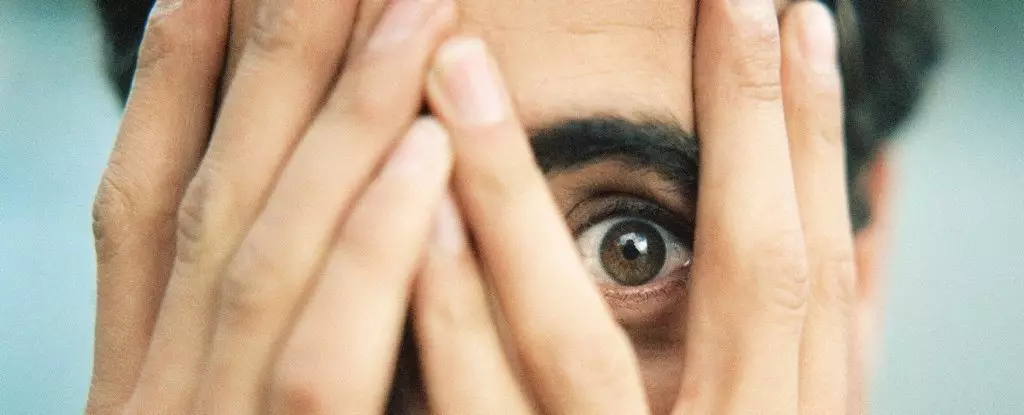In social interactions, we often encounter various behaviors that can trigger discomfort or annoyance. Among these, the sight of someone fidgeting—tapping their foot, playing with their hair, or shifting repeatedly in their seat—can evoke strong emotional responses. This phenomenon, known as misokinesia, affects a significant portion of the population, potentially impacting up to one in three individuals. Misokinesia is characterized by an intense negative reaction to other people’s small, repetitive movements. While initially related to misophonia, a condition marked by irritation from specific sounds, misokinesia stands out due to its visual triggering mechanisms.
Despite misokinesia’s prevalence, scientific inquiry surrounding the topic has been scarce until recent years. In a groundbreaking study led by psychologist Sumeet Jaswal at the University of British Columbia, researchers undertook an extensive exploration of this condition. The study aimed to clarify the emotional and psychological implications of misokinesia on individuals who experience it, shedding light on a largely overlooked social challenge.
The study conducted by Jaswal and fellow researchers assessed over 4,100 participants, drawing samples from university students and the wider population. Through a series of experiments, the team found that around one-third of participants self-reported some degree of sensitivity to fidgeting behaviors. This confirms that misokinesia is not merely a byproduct of clinical conditions but a widespread phenomenon affecting many in everyday environments, including educational and social settings.
Moreover, the emotional impact of misokinesia can be significant. Many individuals suffering from this sensitivity reported experiencing anger, anxiety, frustration, and even a diminished enjoyment of social gatherings and work environments. For some, these emotional responses can prompt a withdrawal from social activities, creating a substantial barrier to interpersonal engagement. The researchers indicated that the peripheral visual irritation could complicate social interactions, where fidgeting often occurs in common settings.
The question arises: Why do these repetitive movements elicit such strong negative reactions? The study offered some insights into the cognitive mechanisms at play, suggesting that heightened visual attentional sensitivity could be a contributing factor. However, early experiments did not provide conclusive evidence that this sensitivity definitively leads to misokinesia. The exploration into how these responses manifest in the brain is still in its infancy, but the researchers postulated that “mirror neurons” might have a role in this aversion.
Mirror neurons are specialized cells that activate both when an individual performs an action and when they observe someone else performing the same action. This mirroring effect could explain why someone with misokinesia may involuntarily empathize with a fidgeter, potentially amplifying feelings of anxiety or discomfort. This connection poses intriguing questions about the intertwining of visual perception, emotional response, and social interaction.
The implications of living with misokinesia can be profound, particularly in settings where social interaction is key, such as workplaces, classrooms, and public gatherings. For individuals hypersensitive to visual distractions, the experience can lead to an ongoing cycle of anxiety and withdrawal. Researchers note that those affected may find themselves steering clear of social engagements or educational activities heavily populated by fidgeters, thereby isolating themselves further.
Furthermore, educating the general public about misokinesia could foster greater understanding and reduce stigma. Much like conditions such as social anxiety or misophonia, raising awareness about misokinesia can prompt discussions around emotional well-being in social contexts. For those struggling with fidgeting behaviors, understanding that their actions may trigger discomfort in others could prompt changes that foster more inclusive environments.
The study by Jaswal and colleagues only scratches the surface of what can be explored regarding misokinesia. Future research should aim to delve deeper into the cognitive and emotional underpinnings of this phenomenon, examining factors like individual differences in sensitivity and potential coping mechanisms.
As researchers continue to unravel the complexities of misokinesia, one comforting takeaway is that awareness and understanding are on the rise. Individuals suffering from this condition can find solace in knowing they are not alone, and the exploration of misokinesia could herald a future where awareness enhances social empathy and accommodation. The overarching message is clear: as we uncover the layers of human behavior, acknowledging the challenges posed by misokinesia fosters a more supportive and understanding society.


Leave a Reply